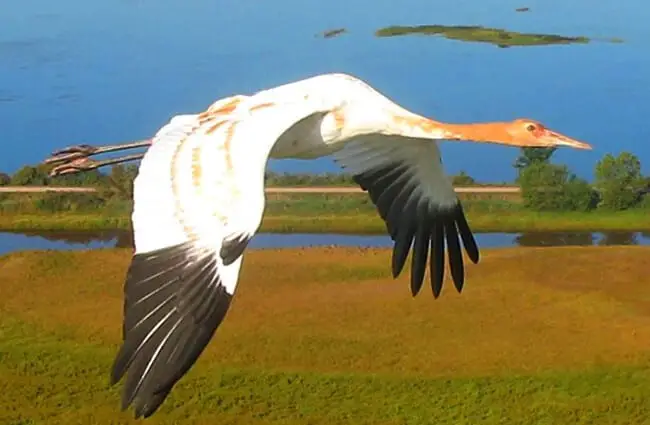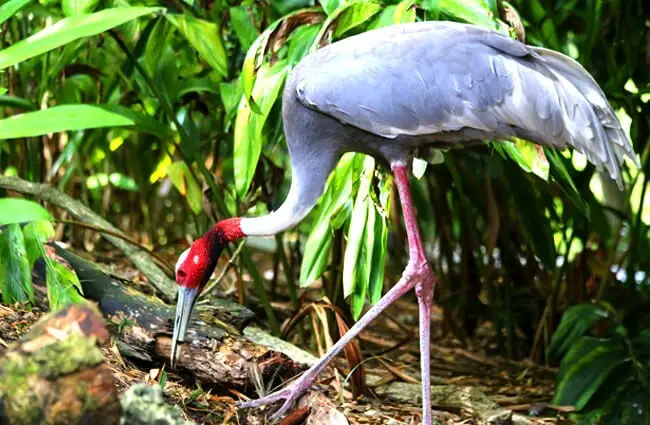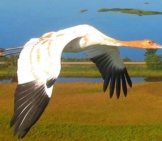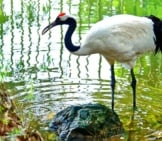The Crane belongs to a family (Gruidae) of birds that have long legs, long necks, and long beaks. There are 15 different species in this family. They are similar in appearance to herons, but they are usually larger than most heron species, and are not related to them in any way.
These birds live in many different regions, including North America, Africa, Eurasia, and Australia. Read on to learn about the Crane.
Description of the Crane
Generally speaking, Cranes are large birds across the family. They stand several feet tall, and their wingspans are usually quite impressive. The largest species in the family, the Sarus Crane, stands nearly six feet tall!
Most Cranes, however, stand about four or five feet tall. These birds vary in color, where some birds are all white, while others are brown, tan, gray, or any combination of the above.
Interesting Facts About the Crane
Because they are so tall, Cranes are definitely imposing animals. Learn more about some individual species in this family, and their various traits and adaptations below!
- Sarus Crane – This species is the tallest species in the family! Not only are they the tallest Cranes, they are also the tallest flying birds in the world. While there are taller birds out there, like ostriches, extremely tall birds usually do not fly.
- Whooping Crane – The IUCN lists this species as Endangered, but their populations are on the mend! Hunting and habitat destruction put these large birds in danger, but researchers bred Whooping Cranes in special captive breeding programs before releasing them into the wild again. They are still under threat, but thankfully conservation efforts appear to be working for these birds!
- Sandhill Crane – Sandhills actually played an important role in the success of Whooping Crane Surrogate Sandhill parents raised Whooping Crane chicks and taught them how to survive in the wild. Those are some good adoptive parents!
- Grey Crowned Crane – This African species has some impressive headgear. The tops of their heads are tufted with light soft yellow feathers, hence the name “crowned.” This species is also one of only two Crane species that sleep in trees.
Habitat of the Crane
Different species have different habitat preferences. Some live in a wide variety of habitats, while others choose only a few select habitats to live in. These birds live in savannas, grasslands, wetlands, marshes, and even desert edges.
They also occasionally live in parks, farms, and agricultural fields. Depending on the species, some nest in or around wetlands, and migrate to different habitats outside of the breeding season.
Distribution of the Crane
These birds live on nearly every continent except Antarctica and South America. Some species are widespread and live across huge regions, while others live in small areas, or migrate between a few small areas. The various areas that you can find these birds include Africa, Europe, Asia, Australia, and North America.
Diet of the Crane
Most Cranes are omnivores, and feed on both small animals and plant matter. Their exact diets vary from species to species. Animals in one region do not always have access to the same prey as birds in another area.
Some of the different types of plants they eat include seeds, fruits, berries, nuts, leaves, and roots. They also hunt for worms, insects, frogs, small mammals, snakes, lizards, snails, and small birds. Some Crane species prefer hunting for a few specific types of foods, while others eat just about anything they can find.
Crane and Human Interaction
Human interaction and conflict are quite detrimental to some Crane species. Habitat destruction is a huge problem, particularly when humans destroy their breeding grounds.
Humans also hunt some species, or have hunted them in the past. The impact of these disturbances varies from species to species. The IUCN lists the Siberian species as Critically Endangered, the Red-Crowned species as Endangered, the Grey Crowned species as Endangered, and the Whooping Crane as Endangered.
Domestication
Humans have not domesticated any Crane species.
Does the Crane Make a Good Pet
No, Cranes do not make good pets. They are large, messy birds, and would not thrive in a household setting. As wild birds, they are not friendly towards humans. In most places, it is also illegal to own one of these birds as a pet.
Crane Care
In zoos, these birds live in large enclosures with plenty of space for them to walk and explore. Because they spend most of their time on the ground, they usually do not need extensive perches and flying room.
Their enclosures often have lots of bushes and shrubs to hide and forage through, and a shallow water body to explore. Many of these birds in zoos are there because they became injured and could no longer survive in the wild.
Behavior of the Crane
Generally, social behavior varies greatly between species, and between seasons. Outside of the breeding season, some Cranes congregate in large numbers, while others are solitary or live only in small families. During the breeding season, mating pairs are usually territorial. The pairs defend their territory from others of their kind, as well as potential predators.
Reproduction of the Crane
Most Cranes are monogamous, and breed with the same partner year after year. Some stay with their partner until one of the two dies, while others breed for only a few seasons. These birds tend to have elaborate mating displays and dances.
On average, most of these birds lay one or two eggs per clutch. They incubate the eggs for about a month, and both parents care for the young chicks. Most chicks can walk or even swim soon after hatching, but are not fully independent until they are several months old.
Beliefs, Superstitions, and Phobias About the Crane
Many different cultures and religions depict Cranes in artwork and mythology. These birds’ mating dances tend to be the most popular symbolism or painting theme. Some styles and movements in kung fu are even named after Cranes. Overall, these birds usually symbolize positive energies, like good fortune or long life.













![Red Angus Closeup of a beautiful Red Angus cowPhoto by: U.S. Department of Agriculture [pubic domain]https://creativecommons.org/licenses/by/2.0/](https://animals.net/wp-content/uploads/2020/03/Red-Angus-4-238x178.jpg)












![Red Angus Closeup of a beautiful Red Angus cowPhoto by: U.S. Department of Agriculture [pubic domain]https://creativecommons.org/licenses/by/2.0/](https://animals.net/wp-content/uploads/2020/03/Red-Angus-4-100x75.jpg)

